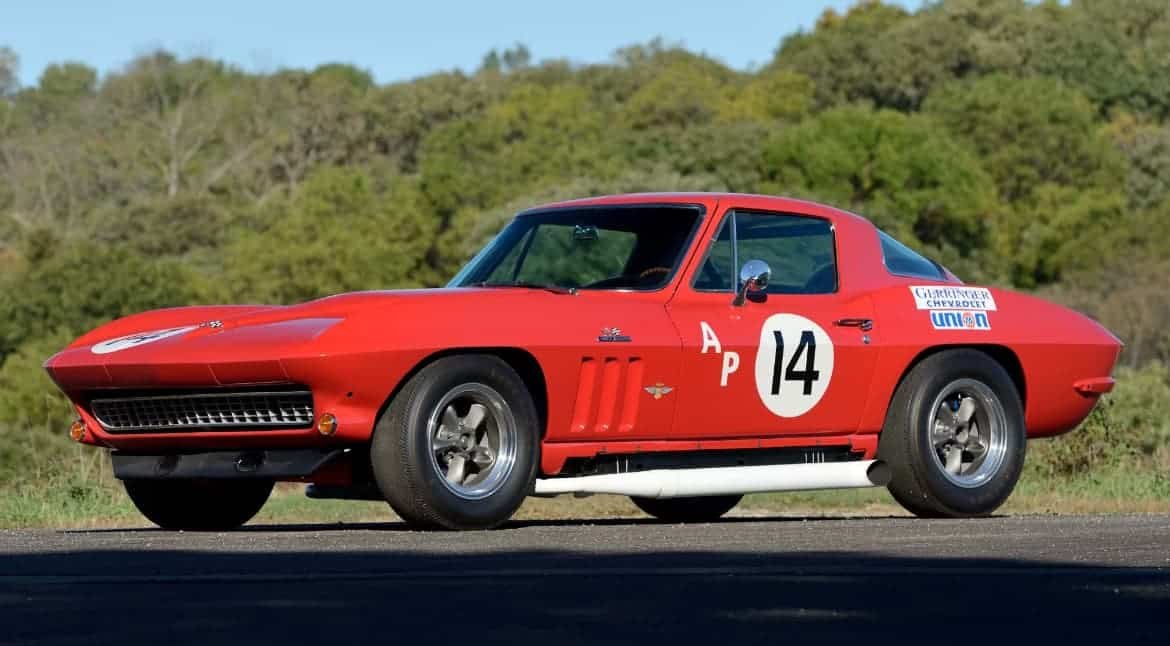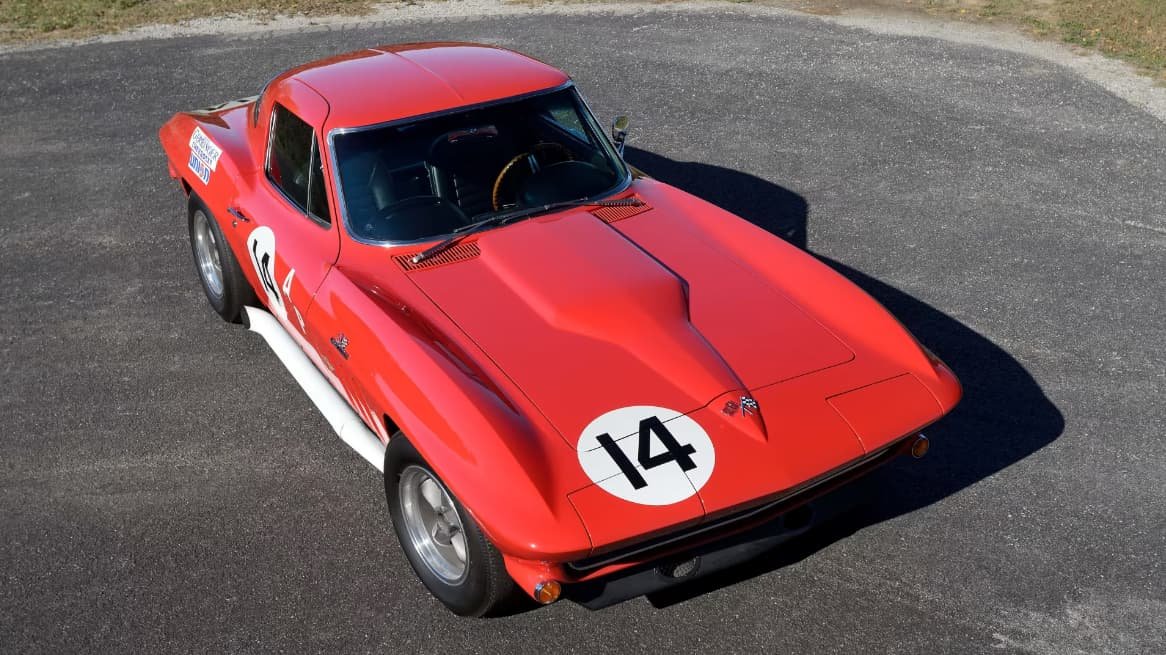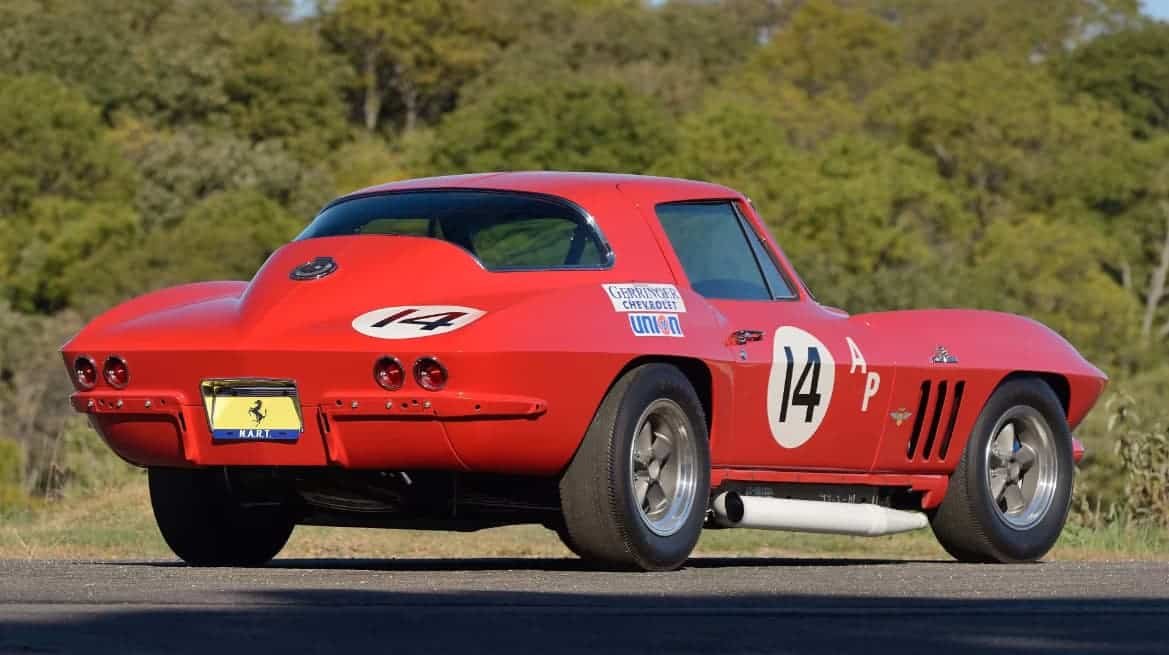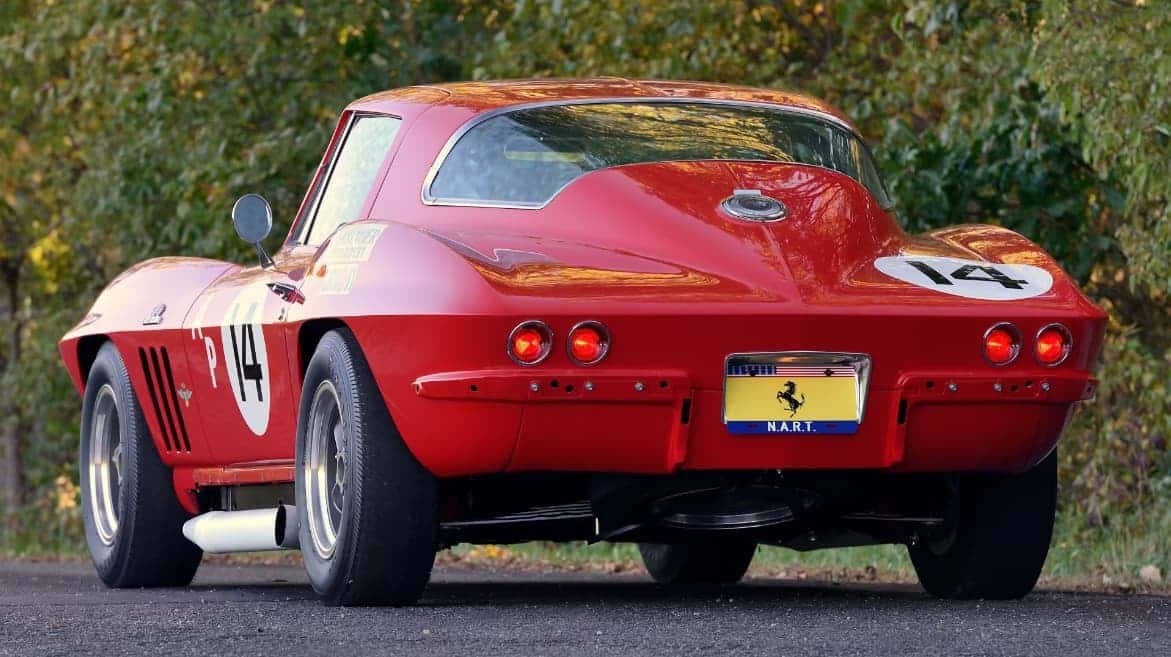The 1966 Chevrolet Corvette Pilot Line L88 holds a special place in automotive history as one of the most remarkable purpose-built factory race cars ever created. Born out of a collaboration between the visionary Zora Arkus-Duntov, the Chief Engineer of GM’s Corvette program, and the renowned Luigi Chinetti of NART (North American Racing Team), this Corvette L88 stands as a testament to the pursuit of performance and innovation.
Development and Features:
At the heart of its development lies the car’s pivotal role as the field test car for the prestigious 1966 12 Hours of Sebring race. Equipped with aluminum cylinder heads, the 427 engine powering this L88 showcased its power and endurance. As one of the ‘Four Kings’ among the heavy-duty purpose-built 1966 Corvette factory race cars, it was a pioneer in its class. It was also the second 1966 Corvette to receive the fresh air intake hood and the first to be built with shoulder harness seat belts, enhancing both performance and safety.

Structural Features and Modifications:
To achieve optimal performance and weight savings, the Chevrolet Engineering Center incorporated several structural modifications. These modifications, combined with the installation of a Dyno ‘seasoned’ 427 L88 engine, elevated the Corvette L88 to new heights. Zora Arkus-Duntov himself took the car for a Sunday afternoon shakedown drive at the GM Tech Center before it embarked on its journey to New York for loading onto the NART transport bound for Sebring.
Sebring and Behind the Scenes:
However, fate had a different plan for the Corvette L88 at the 1966 Sebring race. Due to behind-the-scenes events, Luigi Chinetti made the decision to have Pedro Rodriguez and Mario Andretti drive the Ferrari 365 P2 they raced at the 1966 Daytona 24 Hours. This unexpected turn of events shifted the Corvette L88’s course, but its legacy remained intact.

Race History and Documentation:
The 1966 Chevrolet Corvette Pilot Line L88 boasts an extensive race history documented meticulously in Race Log Books. These records offer a glimpse into the thrilling battles it endured on the racetrack. Alongside the race history, rare photographs, including the original engine compartment photo and others from racer Harold Whims, paint a vivid picture of the car’s journey. The trophies it earned along the way serve as a testament to its accomplishments.
Preservation and Restoration:
Preserving the car’s authenticity is of utmost importance. Even the pieces removed by later racers have been meticulously maintained, with detailed photo documentation. Unusable factory panels have been preserved to further authenticate the restoration process. Every effort has been made to ensure that all necessary parts for restoration are sourced as NOS (New Old Stock) and OEM (Original Equipment Manufacturer), including certain “Pilot Line” parts, adding to its historical significance.
Corporate Sponsorship and Recognition:
Union 76 proudly sponsored the 1966 Chevrolet Corvette Pilot Line L88, underscoring its significance as a pioneering race car. The car’s remarkable performance was showcased at iconic race tracks such as Daytona International Speedway, Talladega Superspeedway, Charlotte Motor Raceway, Virginia International Raceway, Marlboro Motor Raceway, and Road Atlanta. Its achievements earned it recognition at esteemed events like the 2020 Amelia Island Concours d’Elegance, where it won the Grand Sport Trophy for being the Most Historically Significant GM Competition Car, as judged by motorsport legends Derek Bell and Johnny Rutherford.

Research and Ownership History:
Extensive research, including video and tape recordings, has been conducted to uncover the rich history of the
1966 Chevrolet Corvette Pilot Line L88. Affidavits of Authenticity provided by prior owners further validate its heritage. Noteworthy racers, including Harold Whims, Don Yenko, John Finger, and John ‘Sam’ Henderson, have left their mark on this legendary car, shaping its narrative throughout the years.
Notable Features and Equipment:
Equipped with a range of notable features and equipment, the 1966 Chevrolet Corvette Pilot Line L88 captivates enthusiasts and collectors alike. The A85 shoulder belts, C48 heater and defroster delete, F41 special front and rear suspension, G81 Positraction rear axle, J50 power brakes, J56 heavy-duty brake equipment, K66 transistorized ignition, and M22 4-speed heavy-duty manual transmission are just a few elements that contribute to its prowess. Additional features such as the N03 36-gallon gas tank, N32 teakwood steering wheel, N36 telescopic steering column, and the radio delete option showcase its purpose-built design and performance-oriented focus.

Conclusion:
In conclusion, the 1966 Chevrolet Corvette Pilot Line L88 represents an extraordinary chapter in automotive history. Its journey from the factory to the track embodies the spirit of performance and innovation. Through meticulous preservation, ongoing restoration efforts, and a wealth of documentation, this Corvette L88 continues to captivate enthusiasts and serve as a symbol of racing excellence. Its legacy remains an inspiration for future generations, preserving the remarkable achievements of Zora Arkus-Duntov, Luigi Chinetti, and the talented drivers who left their tire tracks on the racetracks of history.




